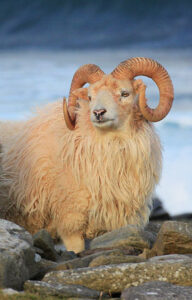The Seaweed Sheep of Ronaldsay
By Cathy Koos
(all photos courtesy of the North Ronaldsay Trust)
Far beyond Scotland and on the way to the Shetland archipelago, there lives a flock of sheep that only eat seaweed. Battered constantly by the North Sea, North Ronaldsay in the Orkney Islands is home to this ancient breed of three thousand hardy sheep. Closer to Norway than London, the breed’s moniker, North Ronaldsay, comes from its island namesake.
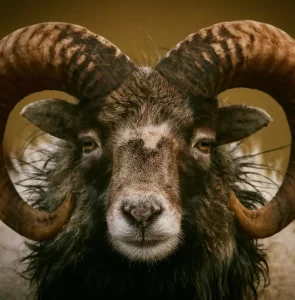
Figure 1 North Ronaldsay sheep
With a sparse number of breeding ewes, the Rare Breeds Survival Trust has placed the flock on its watchlist. The sheep are a critical contributor to the island’s economy with popular mutton and wool.
Originally evolving due to limited forage on the inner island, the sheep forage on the copious, ever-present supply of seaweed. Sheep generally do not tolerate copper in their diets, which is present in substantial amounts in seaweed, but this breed has slowly evolved and adapted to eating copper-infused seaweed on the beach.
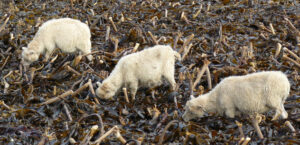
Figure 2 On the beach shingle
During lambing season, however, the ewes are permitted inland, but even then, many prefer to stick with seaweed forage.
Back in 1831, farmers realized that the sheep thrived on seaweed, so they built a stone wall around the island to keep these nearly wild sheep to forage on the beach shingles and off the limited pastures for domesticated livestock.
Created to protect “the island that time forgot,” the “North Ronaldsay Trust (NRT) aims to preserve the built and natural heritage of the island for the benefit of the community and the public at large. These include structures such as the Old Beacon, the two Kirks, the unique stone wall, the seaweed-eating North Ronaldsay sheep, the flora and fauna, the geological and archaeological features, and the Island’s natural beauty.” [ northronaldsaytrust.com ]
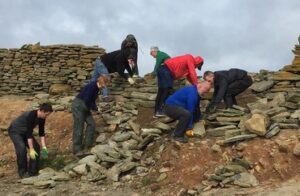
Figure 3 Sheep Festival volunteers
Over the decades, the stone wall has been breached in places due to weather, the sea, or just the age of the wall. Recognizing the importance of the wall for protection of the sheep, the Trust has recruited a warden to look after the 6-foot high, 13-mile-long wall.
The new warden, 28-year-old Sian Tarrant, has a daunting job ahead of her due to the recent harsh weather conditions. A marine biologist by profession, Sian studied seals on a few remote Orkney Islands prior to coming to North Ronaldsay.
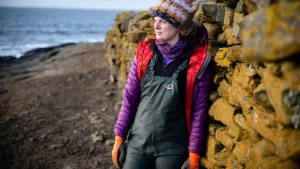
Figure 4 Sian Tarrant
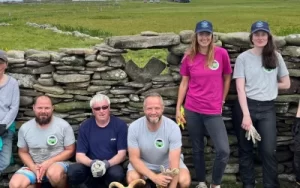
Figure 5 Happy Sheep Festival Volunteers
In addition to working and patrolling the wall, Sian also recruits people from the local community and beyond to help maintain the wall during the annual Sheep Festival. So, if you have a burning desire to see these rare breed sheep and set a few stones, North Ronaldsay is calling you.
